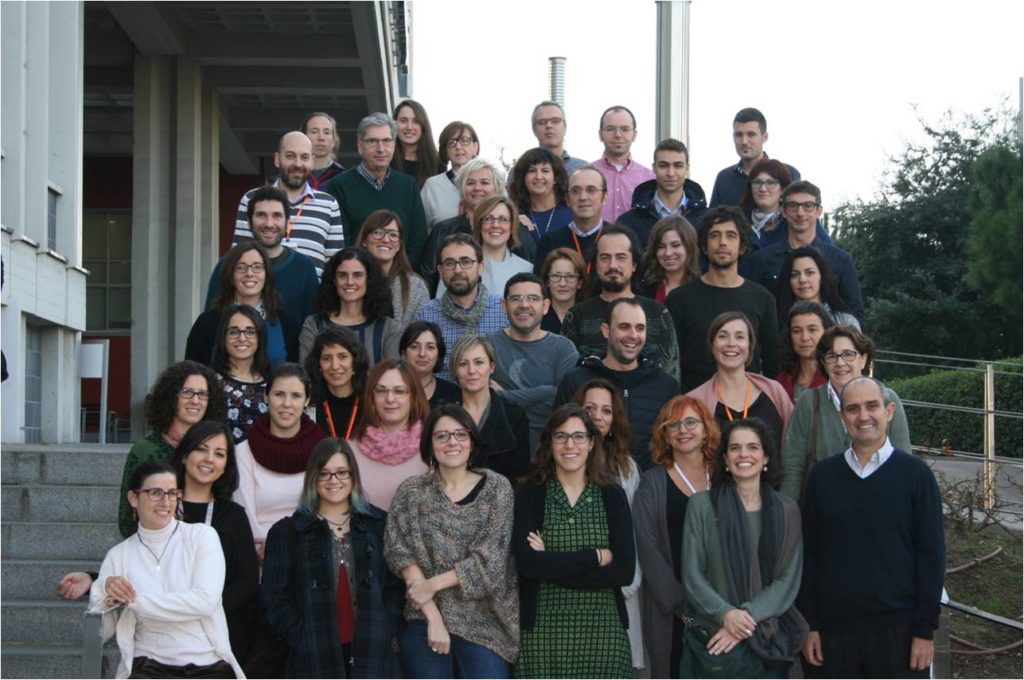The multidisciplinary team of the Joint Program of Cancer of the Catalan Institute of Oncology-Bellvitge biomedical research institute and the Germans Trias i Pujol Institute has taken a step forward in the diagnosis of people with a high genetic predisposition to develop cancer through
the development and implementation of a new diagnostic strategy. Based on genomic tools and the use of a proprietary bioinformatic analysis, this strategy improves diagnostic efficiency by allowing the sequencing of all hereditary cancer genes at a time and analyzing them in packages according to the clinical presentation or suspicion of the patient.
In the six months since its implementation, more than 700 people have been able to benefit from this new strategy. The development and implementation of this new system of genetic diagnosis has just been published in two articles in the journal Scientific Reports.
The ICO-IDIBELL-IGTP Joint Hereditary Cancer Program works intensively to reduce the impact of cancer in Catalonia by identifying alterations in genes that, when mutated in individuals and families, raise the risk of developing cancer. Currently, the field of genetic diagnosis is undergoing a revolution with the application of new mass generation sequencing (Next Generation Sequencing (NGS) methodologies).
These advances are changing the paradigm of genetic diagnosis, since it has gone from analyzing one or a few genes, to analyzing tens or hundreds at a time (what is called gene panels) or even all the genes of the human genome (exome). These new possibilities of analysis allow to identify the genetic alterations causing the high predisposition to cancer much more efficiently, especially in individuals and families where the clinical diagnosis of this predisposition is complex.
It is in this context that the ICO-IDIBELL-IGTP Joint Program has developed a new diagnostic strategy, called I2HCP, that allows sequencing all hereditary cancer genes at a time and subsequently analyzing them in personalized packages according to the clinical suspicion of the patient. The new strategy has made it possible to improve the efficiency of diagnosis and respond to more than 700 patients since the I2HCP was implemented the Catalan health system six months ago.
The prestigious scientific journal Scientific Reports has just published two articles led by the ICO-IDIBELL-IGTP Joint Hereditary Cancer Program, which present the new I2HCP diagnostic strategy and compares it with other existing strategies.
The first article describes the development, validation and implementation of the new diagnostic strategy, an innovation and translational process that has required a continuous effort during the past years. Being a proprietary system, it allows to retain all the knowledge and control over the entire diagnostic process, provides a high flexibility in the analysis and accelerates the incorporation of new genes with clinical utility. The article identifies these factors as keys to understanding the improvement of genetic diagnosis.
The implementation of this system has required a change in the way of working in genetic diagnostic groups, which has become totally multidisciplinary due to the high number of skills required: molecular genetic diagnosis, genomic technologies, clinical diagnosis and oncogenetics, Genetic counseling, bioinformatics, etc. The work also puts into value the possibility of using this technology to quantify in a more personalized way the genetic risk to develop cancer.
The second published work has had the collaboration of the team of the National Center for Genomic Analysis (CNAG) – CRG. This work compares the performance of the genetic diagnosis of the new panel in relation to a panel of commercial genes and the study of all genome genes. The study compares the different strategies in a series of 24 patients, 10 with a known mutation (control series) and 14 with suspected hereditary cancer but with a previously unidentified mutation (series discovery) and highlights the suitability of the strategy developed by the ICO-IDIBELL-IGTP Joint Program in Hereditary Cancer.

